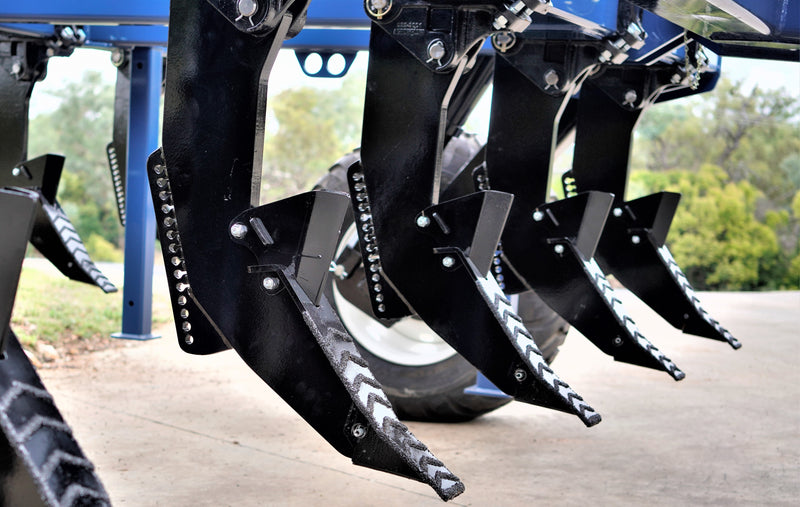Inversion Shanks
Inversion shanks are used to completely invert the soil profile, turning over the top layer of soil and burying any surface organic matter or crop residues deep into the subsurface. They are designed to lift soil from the bottom of the working depth up toward the surface. It disrupts soil layering and intermixes the soil while still fracturing and aerating the soil structure.
What is the benefit of inversion ploughing?
The primary motivations for soil inversion include addressing herbicide-resistant weeds and hydrophobic topsoil conditions. Through soil inversion, it becomes possible to bury both herbicide-resistant weed seeds and the water-repellent topsoil layer effectively.
Using inversion shanks during deep ripping can be useful in situations where soil compaction or surface layer soil problems exist, as they can help to improve soil structure and aeration. It can also be used to bury weed seeds, reducing weed populations in subsequent crops.
Inversion shanks are particularly useful for incorporating large amounts of organic matter or cover crops into the soil. By burying this organic matter, the nutrients it contains are gradually released into the soil over time, improving soil fertility and reducing the need for synthetic fertilisers.
A single soil inversion process involves fully burying the hydrophobic topsoil layer, typically at depths ranging from 150 to 350 mm, while bringing up a layer of moist, wettable subsoil to the surface. Additional advantages encompass the entombment of herbicide-resistant weed seeds, alleviation of soil compaction, enhanced nutrient accessibility, minimized disease susceptibility, and integration of soil amendments like lime.
What are the drawbacks of soil inversion?
However, it should be noted that inversion ploughing can also have some drawbacks. It can lead to increased soil erosion, and if done too frequently, it can negatively impact soil health by disrupting the natural soil ecosystem. Therefore, inversion ploughing should be used judiciously, and its benefits and drawbacks should be carefully considered before use.
Compatiblity
Inversion shanks and options are available for the #9 Shank Assembly and the HD Rigid Assembly.










